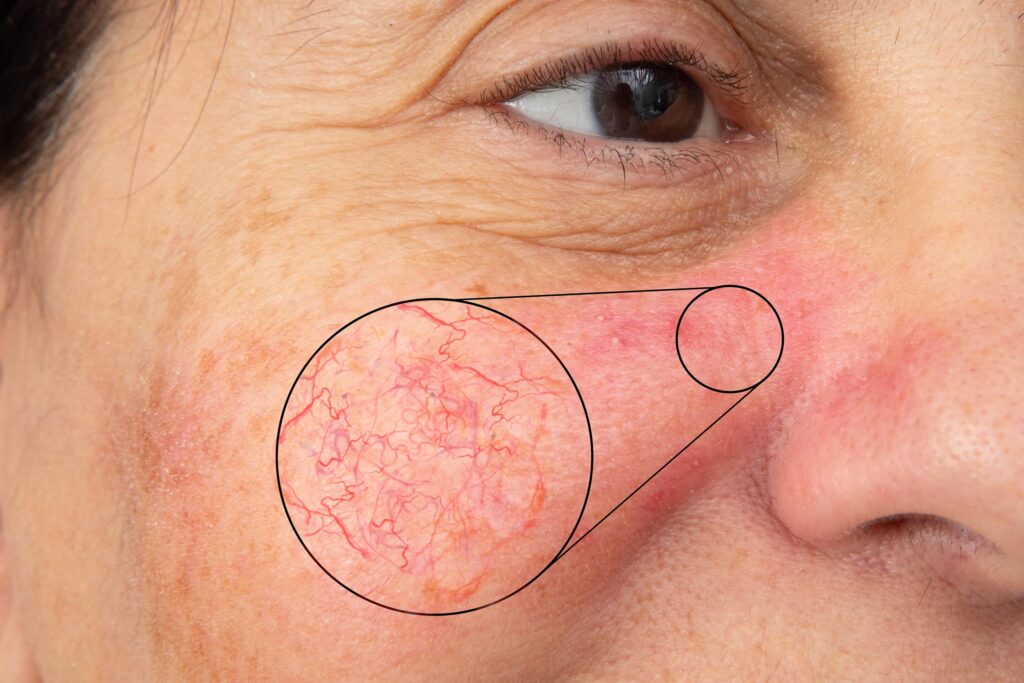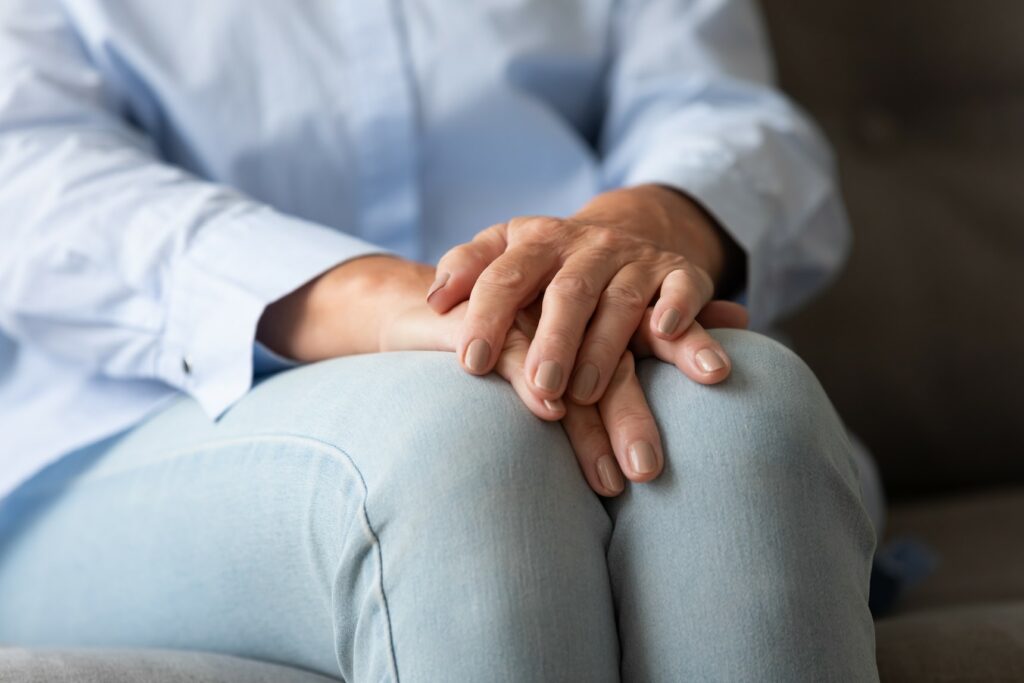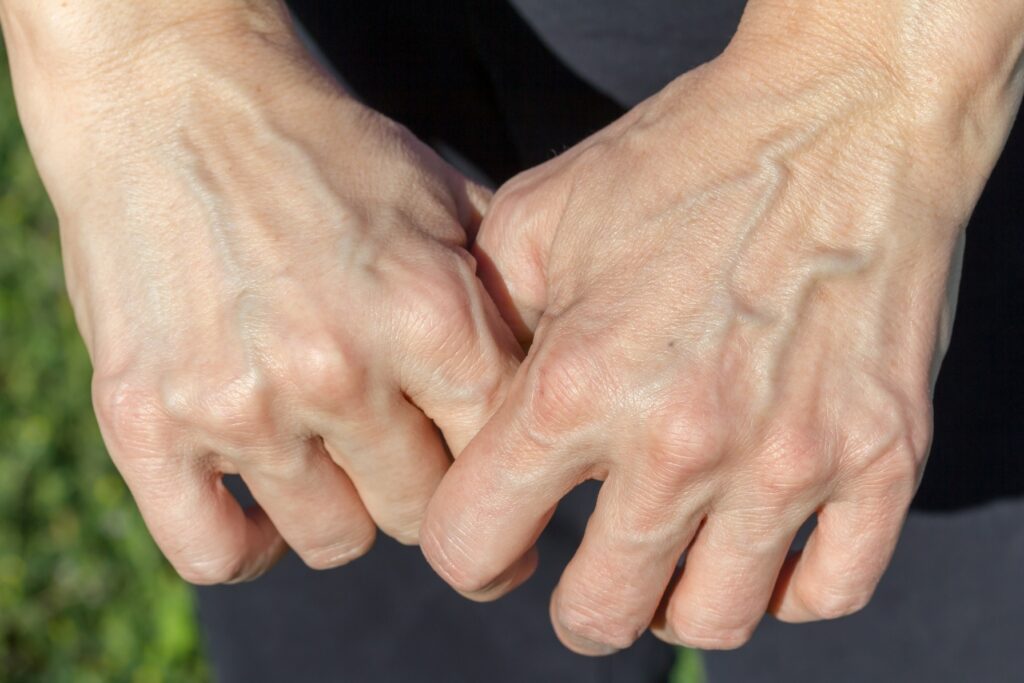We all want to put our best face forward. It’s almost always the very first thing people notice about us – and whether you are a lover of lotions, cosmetics, and aesthetic treatments, or a minimalist preferring to present and age more naturally, you doubtless want to look the very best you can.
While we are all well aware of the impact of wrinkles, fine lines, blemishes, and sun damage, spider veins on the face can also be an issue for a lot of people.
What are they? What causes them? And what can you do about them? What are Spider Veins?
Spider veins are the thin red, purple, or blue lines that can appear on the body, particularly the legs and the face. Resembling threads or webs, they are tiny, damaged veins or capillaries that can be highly visible just under the surface of the skin. A lot of people think of them as “broken blood vessels”. Unlike varicose veins, they rarely cause any pain, but they may occasionally lead to mild discomfort. Their biggest impact is almost always aesthetic.
On the face, spider veins are also referred to as Facial Telangiectasias. They can appear anywhere but are most common on the nose, cheeks, and chin.
What causes Spider Veins on the face?
The skin of the face is sensitive, usually very thin, and always exposed to the elements – heat, cold, dry air, sunlight, and wind. Spider veins occur due to skin damage and poor circulation in the capillaries, causing these tiny blood vessels to swell and break, especially in areas of the face where the soft tissues are thinnest.
Numerous factors contribute to the development of facial spider veins, including:
• Gentics – spider veins are commonly hereditary. If a ruddy complexion, skin that flushes or blushes easily, or spider veins run in your family, you are more likely to develop spider veins yourself, especially on the legs and face.
• Ageing – as we get older, the integrity of the walls of our blood vessels becomes compromised. Developing varicose veins and spider veins can happen at any age but are much more common as we get older, especially from middle age.
• Gender – women tend to be impacted by spider veins more than men. This is likely associated with the influence of hormones, specifically oestrogen which promotes their growth.
• Sun exposure – UVA and UVB sun damage can enlarge blood vessels and bring them closer to the surface of the skin, as well as damaging the integrity of the skin itself.
• Extreme Heat / Cold – extreme or sudden changes in the temperature can result in spider veins, as circulation is impacted. Anything that causes the face to flush (heat, humidity, exercise, extreme cold or wind) may cause a blood vessel to burst under the skin.
• Alcohol Consumption – alcohol temporarily dilates the blood vessels. Frequent or excessive alcohol consumption may lead to chronic facial redness and broken blood vessels.
• Pregnancy – the elevated oestrogen levels and higher blood pressure (due to greater blood volume) that are associated with pregnancy easily result in broken superficial blood vessels – including on the face.
• Skin Diseases – conditions including rosacea cause fair skin to flush. Flushing is caused by tiny veins dilating, and sometimes a spider vein develops from this.
• Injury – sudden, extreme pressure changes or injuries to the skin can cause a broken capillary to appear – including sneezing, vomiting, bruising, etc. While these will often resolve, some are permanent.
• Environmental Irritants – some pollutants, chemicals, and irritants may damage the skin, making tiny blood vessels more visible. Smoking cigarettes or vaping are an example of irritants that compromise vascular health and increase the risks of facial spider veins developing.
• Certain Medications – some medicines (including blood pressure medications and Viagra) are vasodilators; these cause the blood vessels to expand, increasing the risk of spider veins.
What can you do about Spider Veins on the face?
The great news is that spider veins on the face can be prevented!
• Limit your sun exposure – wear sunscreen, a hat, and sunglasses when you are going to be in the sun. Maximise time in the shade where possible.
• Avoid overheating – drink plenty of water daily, especially on hot or humid days and when exercising. Choose not to exercise outside during the hottest part of the day.
• Avoid very hot baths, showers, spas and saunas, as these all dilate the blood vessels and increase the risks of spider veins developing.
• Protect yourself from injuries to the face when participating in contact sports – wear helmets or face masks when cycling, skateboarding, skating, playing baseball, hockey, and riding a motorcycle.
• Moderate (or avoid) foods that increase blood flow and circulation. These vasodilator foods include alcohol, caffeine, cayenne pepper, chilli, turmeric, pomegranate, onions and garlic, cinnamon, and others.
• Maintain a healthy weight and follow a heart-healthy diet.
Home Remedies to minimise facial spider veins include:
• Vitamin C helps maintain blood vessel health and may help minimise the appearance of broken capillaries on the face. A Vitamin C supplement may help.
• Using a cold compress, like a cold pack or bag of frozen peas over a handkerchief or similar on the face may help contract blood vessels and minimise their appearance and any associated puffiness.
• Apple cider vinegar has astringent properties and may help reduce redness.
• Using Retinol/Vitamin A creams may help by building collagen – ask your doctor or dermatologist about the best product for you.
If you already have spider veins, effective treatment options are available.
These include:
Microsclerotherapy – this treatment involves the injection of a sclerosing agent to quickly make the spider veins disappear. A very fine needle is used and a magnifying light enables clear visualisation of the spider vein. (This is the gold standard treatment for spider veins on the legs.
LaserTherapy – intense laser lights are used by some aestheticians to destroy spider veins. Risks include damage to the skin itself, as it can become more sensitive. It is not suitable for people with a darker complexion as it can destroy melanin and cause discolouration
IPL Therapy – refers to Intense Pulsed Light Therapy, which uses lights that penetrate the deeper skin layers without damage to the uppermost layer. This treatment is considered safer and superior to Radiofrequency / Electrocautery – uses a fine electrified needle tip to vaporise the tiny blood vessels.
Visit Crows Nest Cosmetic and Vein Clinic – Dr Nicole James is our in-house vein doctor. With a wealth of experience and expertise in Australia and overseas, managing and treating vascular conditions including but not limited to spider veins and varicose veins, she can assess and advise you on the best approach to dealing with your spider veins and offer gold-standard treatments so that you can look and feel your very best in future.
Note that while we do treat spider veins and varicose veins on the legs, we do not offer facial spider vein treatments. Dr James can, however, offer advice if you have facial spider veins when you consult with her about your leg veins.
Our leg spider vein treatments require:
• No GP referral
• No time off work
• No hospital admission
• No surgery
• No stitches
• Are affordable
• Are eligible for Medicare rebates
Don’t you deserve to say hello to a new level of confidence in 2023? Contact us via our online contact form, or call (02) 9906 1555 or email [email protected].




